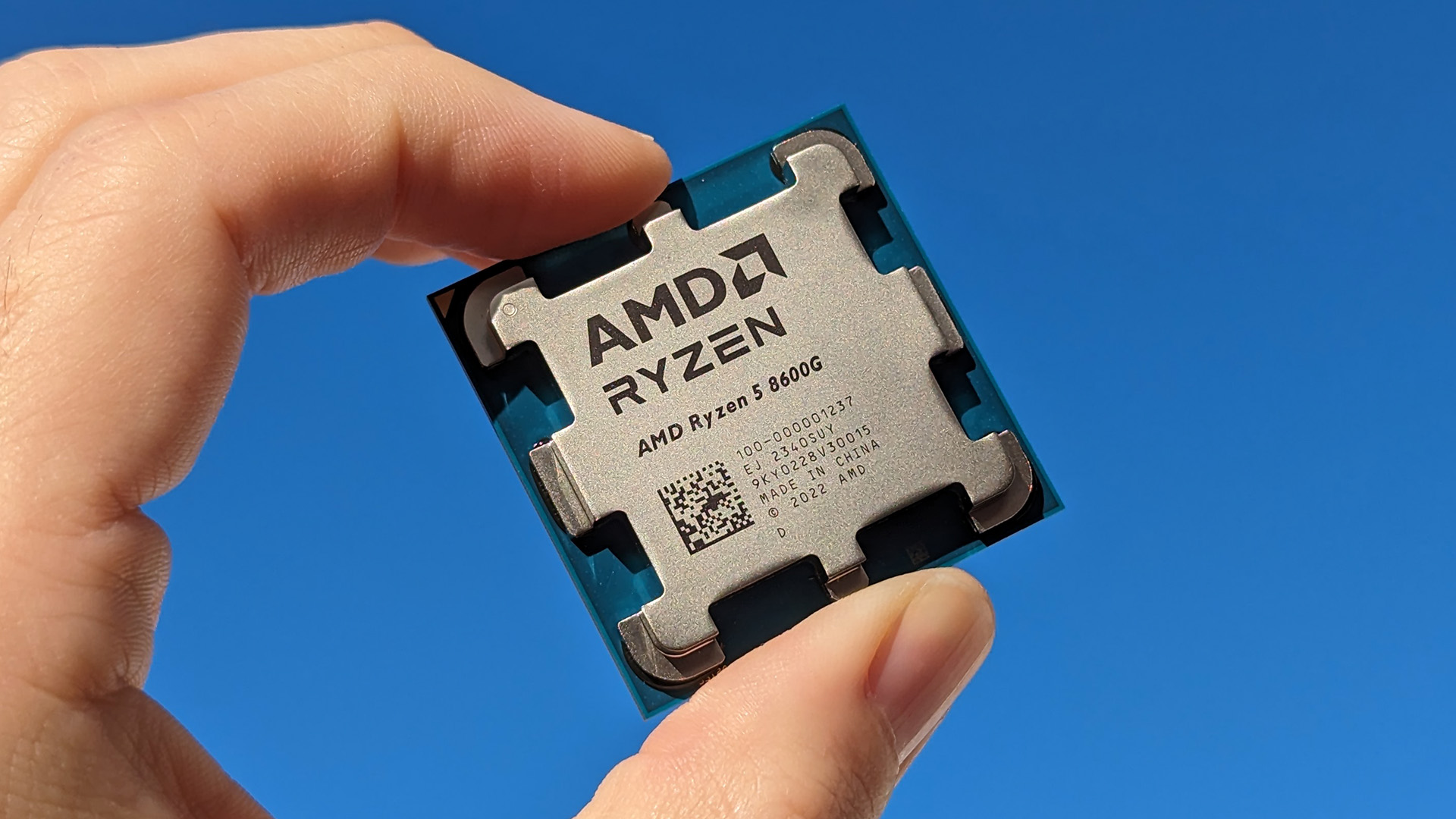
Custom gaming PCs are probably the ultimate temptation for those interested in the hobby, but they're also one of the most expensive projects you could start.
A dedicated graphics card is usually one part that would eradicate any modest budget. Desktop AMD Radeon or NVIDIA RTX GPUs aren't always affordable for all, even at the entry-level. So, AMD's latest Ryzen 8000G Series processors are the answer.
The Ryzen 7 8600G is a Zen4 APU combining a CPU, integrated GPU, and its latest XDNA NPU to handle dedicated AI processes. Its Radeon 760M iGPU promises to make the latest AAA games playable without a dedicated graphics card, but can it stand up to its more powerful 8700G sibling and tempt those tight on cash?
Disclaimer: This review was made possible by a review sample provided by AMD. The company did not see the contents of the review before publishing.
Ryzen 5 8600G: Price and availability
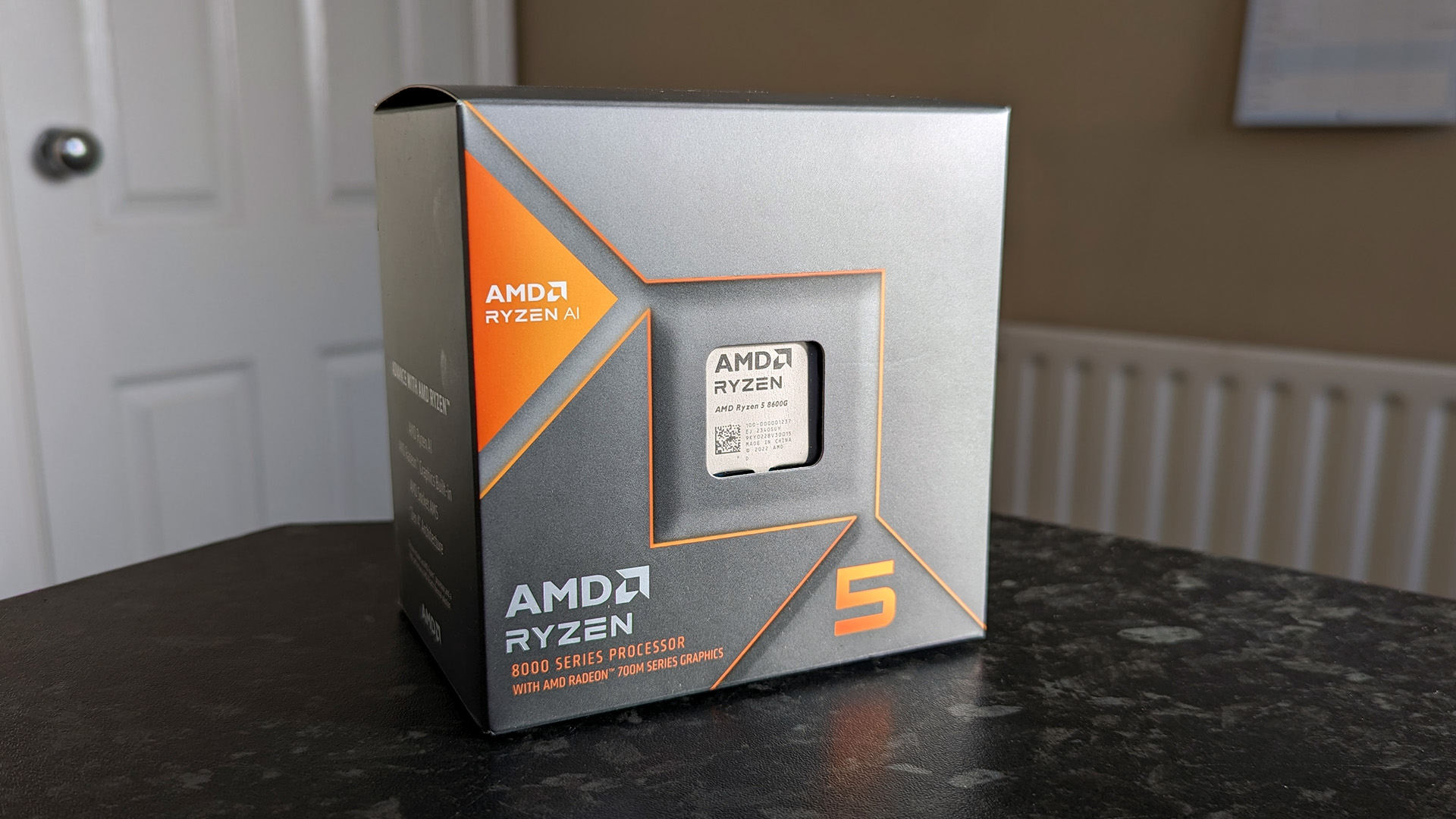
AMD's Ryzen 5 8600G desktop processor will be released on January 31, 2024, with a $229 MSRP. It's the second most powerful Zen4 APU in the Ryzen 8000 G-Series range, one step below the Ryzen 7 8700G, and features integrated Radeon 760M graphics and is the second APU in this series with a low-power AMD XDNA NPU for handling AI-driven tasks. It's designed for motherboards with an AM5 (LGA 1718) socket and is not backward-compatible with AM4 boards. However, many CPU coolers, including the boxed AMD Wraith air cooler, designed for an AM4 bracket, will fit AM5 equivalents, but check with your chosen manufacturer first.
Ryzen 5 8600G: Specs and testing parts
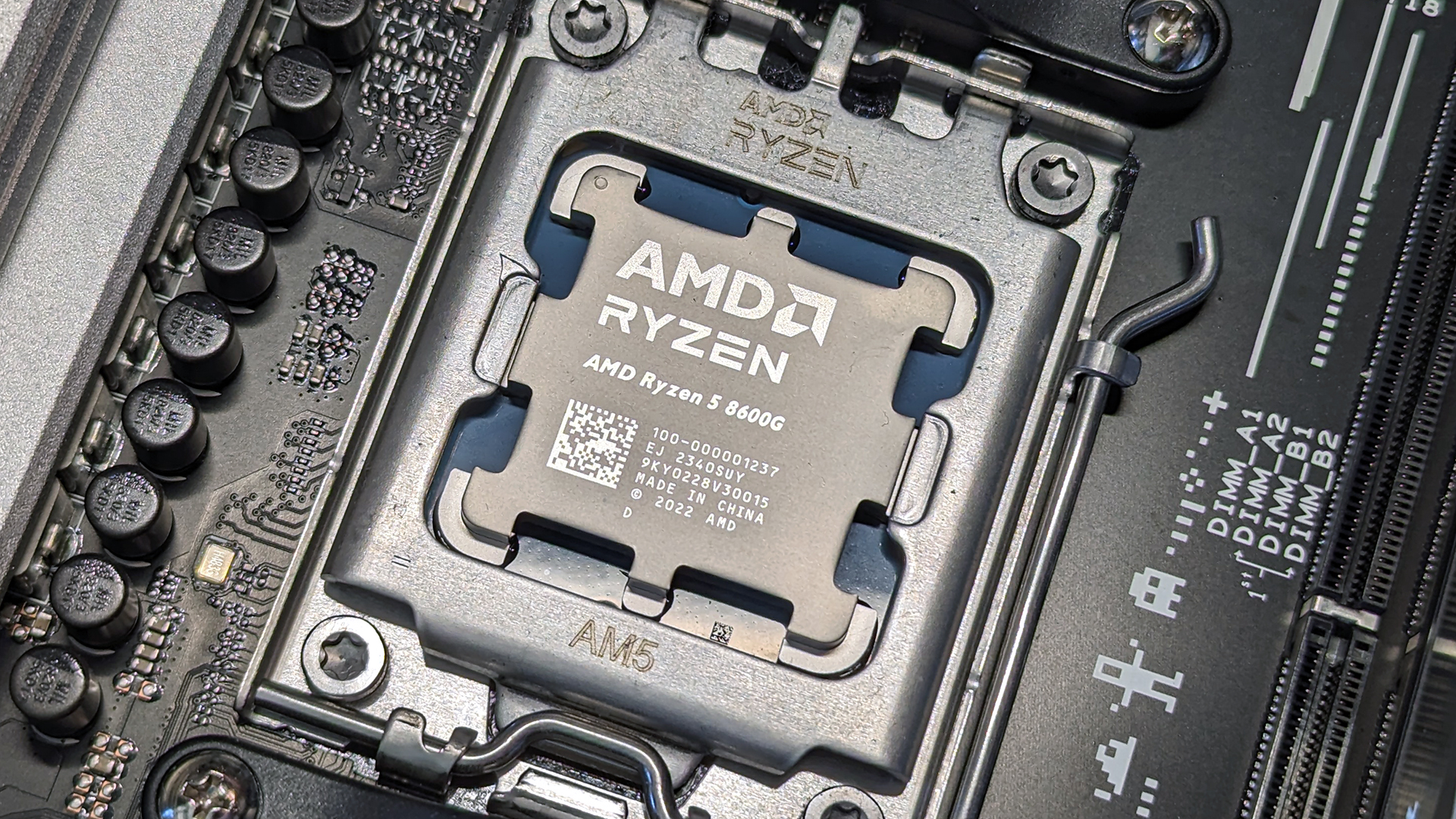
AMD's Ryzen 5 8600G comes in second place in its 8000 G-Series desktop processor range, carrying a $229 MSRP, $100 cheaper than the high-end 8700G. It carries a 65W TDP and integrated Radeon 760 M-Series graphics, which sits somewhat between similar iGPUs found in the AMD Z1 (Radeon 740M) and Z1 Extreme (Radeon 780M) chips used in variants of the ASUS ROG Ally portable PC gaming handheld.
It's a 6-core/12-thread CPU with 22MB of total cache and base and boost clock speeds of 4.3GHz and up to 5.0GHz, respectively, marginally lower than the Ryzen 7 8700G. The 8600G features the same AMD XDNA NPU as the 8700G, though the remaining CPUs in the range do not. This makes the Ryzen 7 8600G and Ryzen 5 8600G extremely similar processors, and choosing between them will mostly come down to your budget.
The Ryzen 5 8600G pushes the limits of a 65W desktop processor while still making some modest cutbacks to appeal as a more affordable alternative than the high-end 8700G. There are plenty of more powerful options from AMD with close to double the base TDP and far more cache, like the previously reviewed Ryzen 7 7800X3D, which still stands as one of the best gaming CPUs you could buy. Still, the 7800X3D works best when paired with a suitable graphics card and isn't advertised to the same kind of budget-conscious crowd as the 8600G is.
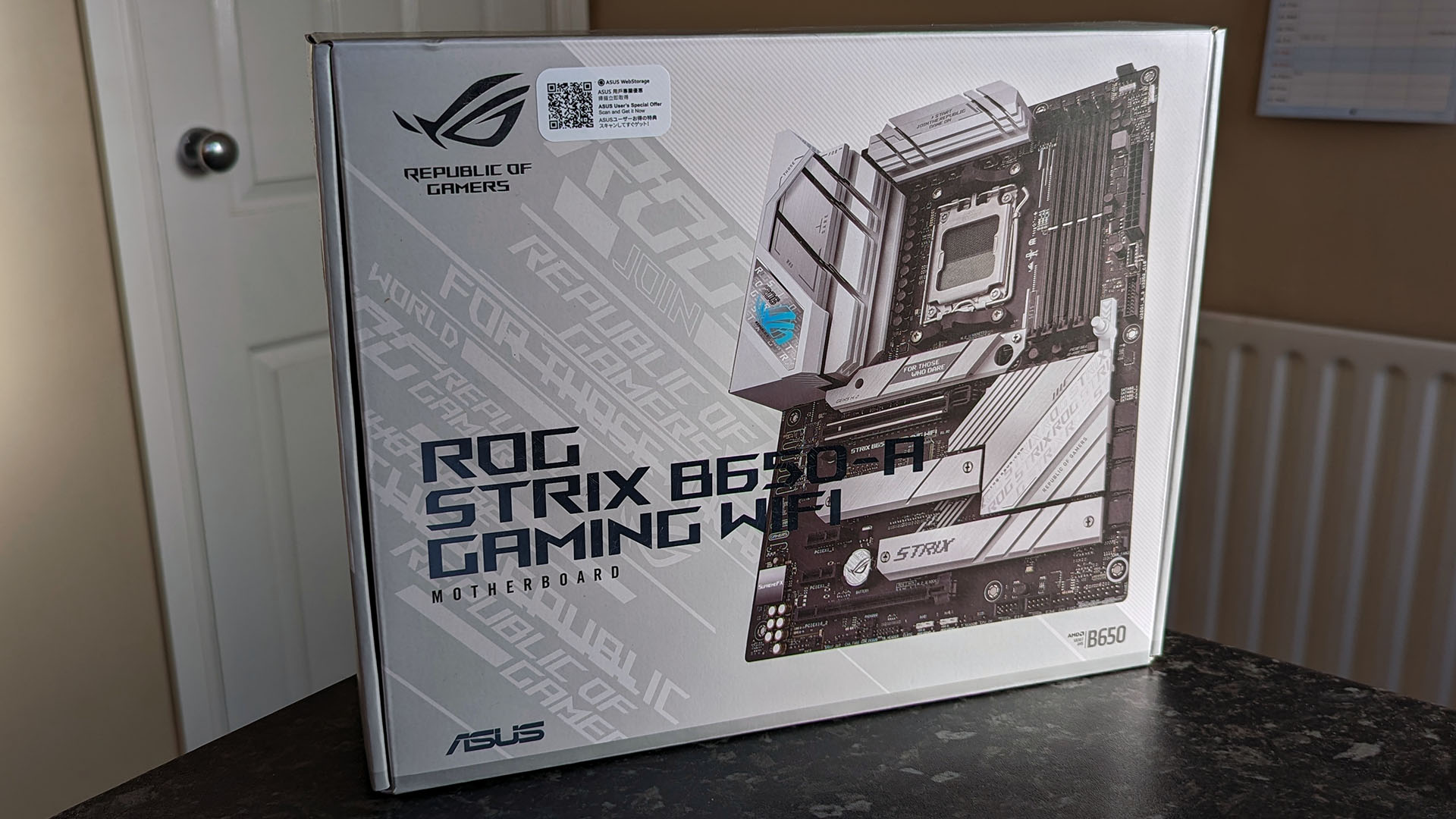
AMD provided a compatible ASUS ROG STRIX B650-A Gaming WiFi motherboard and 32GB of G.SKILL Trident Z5 Neo RGB DDR5-6400 RAM, and the remaining parts were already present in my spacious benchmarking machine built inside the HYTE Y70 Touch. Following my testing of the Ryzen 7 8700G, I used a 280mm Corsair H115i Elite Capellix all-in-one (AIO) liquid cooler rather than the AMD Wraith air cooler that comes in the box. While hardly in danger of overheating with the Wraith, I opted for Corsair AIO to prevent any accidents while fiddling with manual overclocks later.
The ASUS motherboard was already updated with pre-release drivers provided by AMD during my testing of the Ryzen 7 8700G, with Windows 11 Pro set up as an OOBE (out-of-box experience) updated before any tests were run. Hyper-V was disabled in the BIOS, known as SVM for AMD CPUs, and the FCLK frequency was automatically set at 2000 MHz. AMD recommends using 2400 MHz FCLK, and this should be automatically applied with upcoming motherboard drivers with updated AGESA versions. AMD Ryzen Master and Radeon Adrenaline Edition were the first third-party apps installed after the first boot with no issues from the preview chipset drivers.
Ryzen 5 8600G: Benchmark results
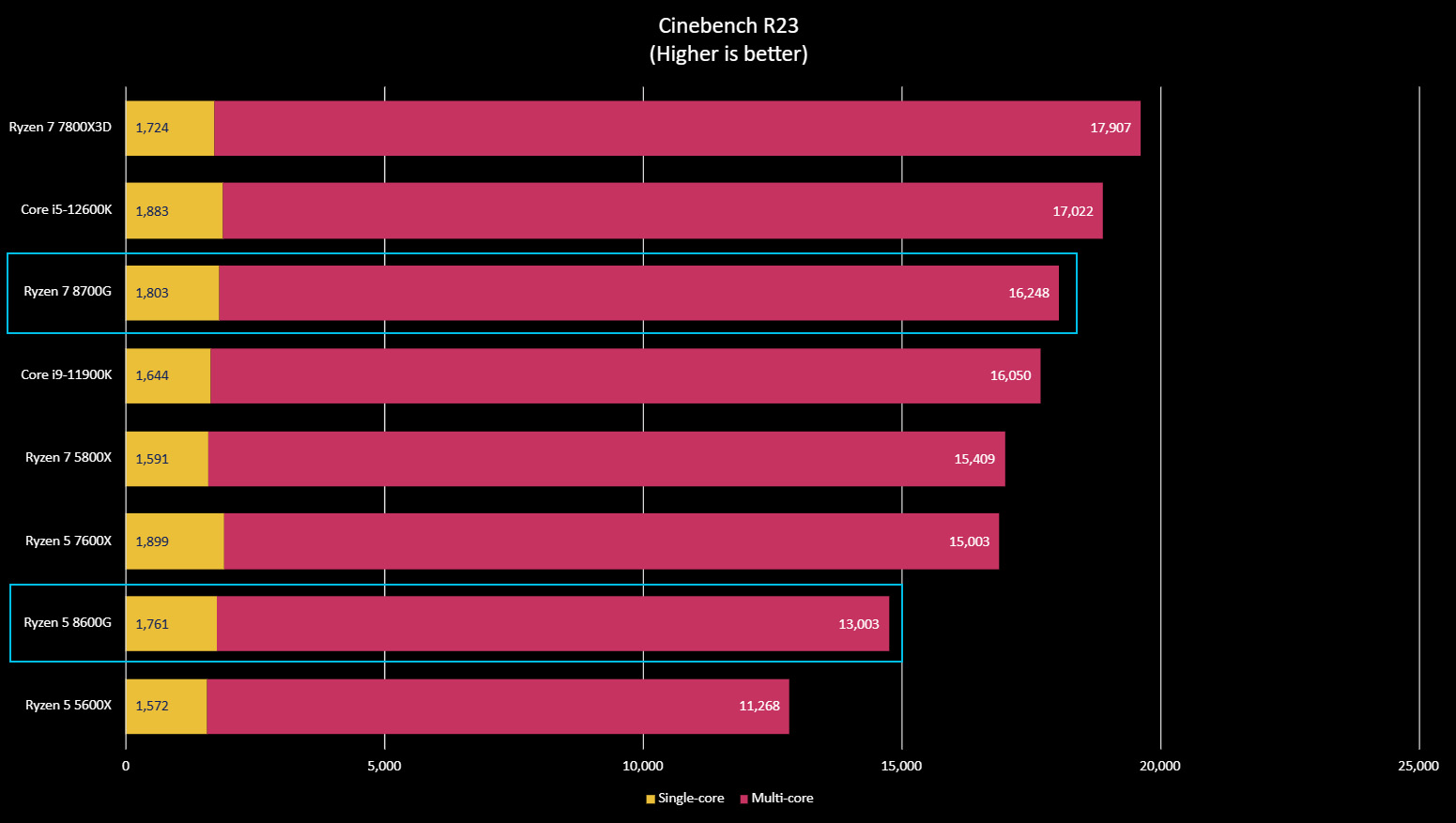
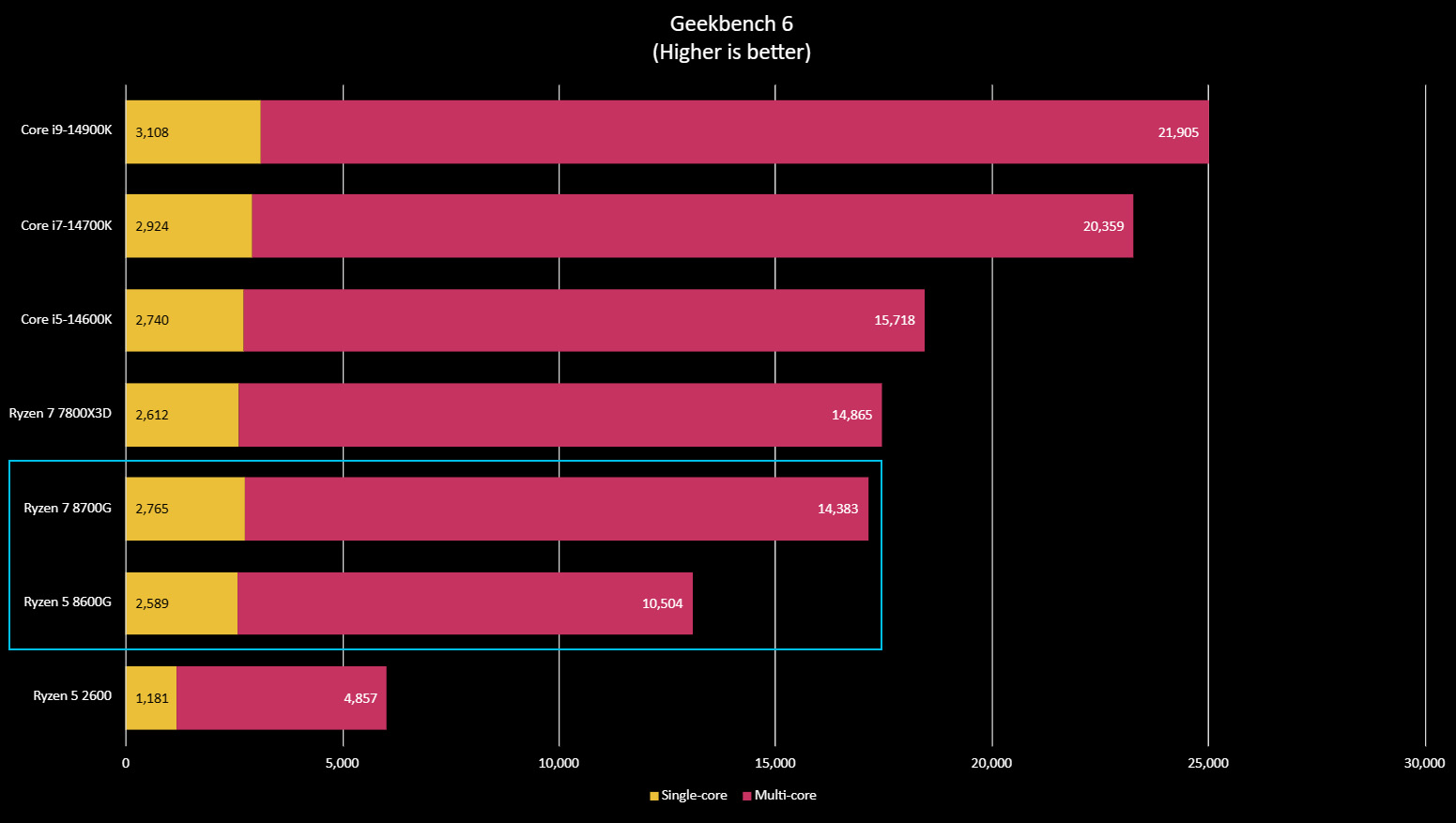
Since they're so similar, each benchmark will come with inevitable comparisons between the Ryzen 5 8600G and its more powerful sibling, the Ryzen 7 8700G. For years, I've strongly advocated the previous-generation Ryzen 5 5600X as the ultimate choice for building a gaming desktop on a strict budget, but that might change with today's tests. A CPU-centric benchmark test in Cinebench R23 shows the 8600G score to be about 19% slower than the 8700G but ranks above the 5600X.
Geekbench 6 shows the 8600G coming in 26% slower than the 8700G, and public results of the 5800X show multi-core scores of 10,276, so it's ranked similarly. Remember, there is a $100 difference between the top-end Ryzen 7 and this second-place Ryzen 5, so these scores make sense. Running Cinebench 2024, the 8600G scored 789 in multi-core performance and 108 in single-core, which matches up to the 777 multi/108 single score from AMD's in-house calibration scores.
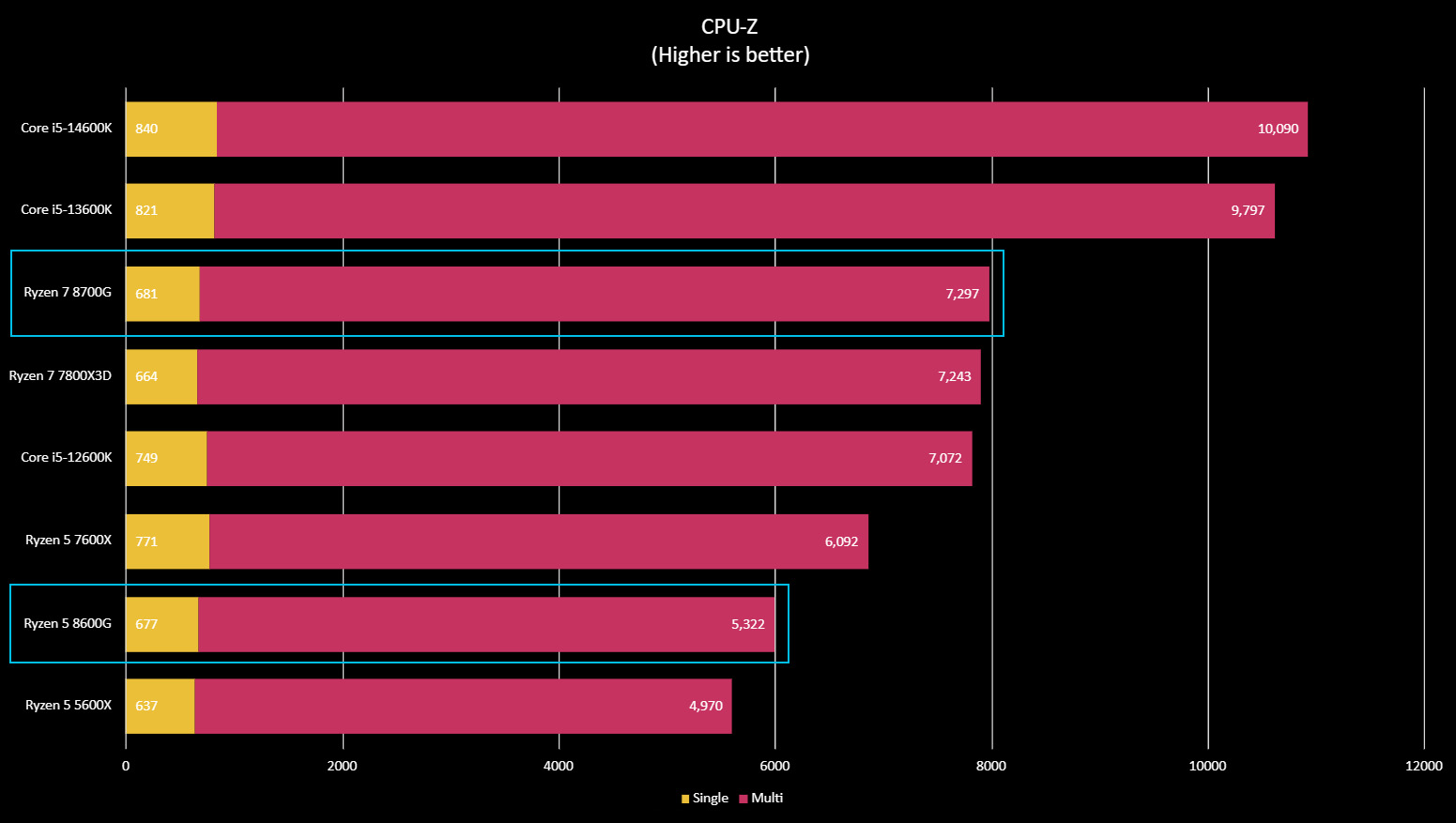

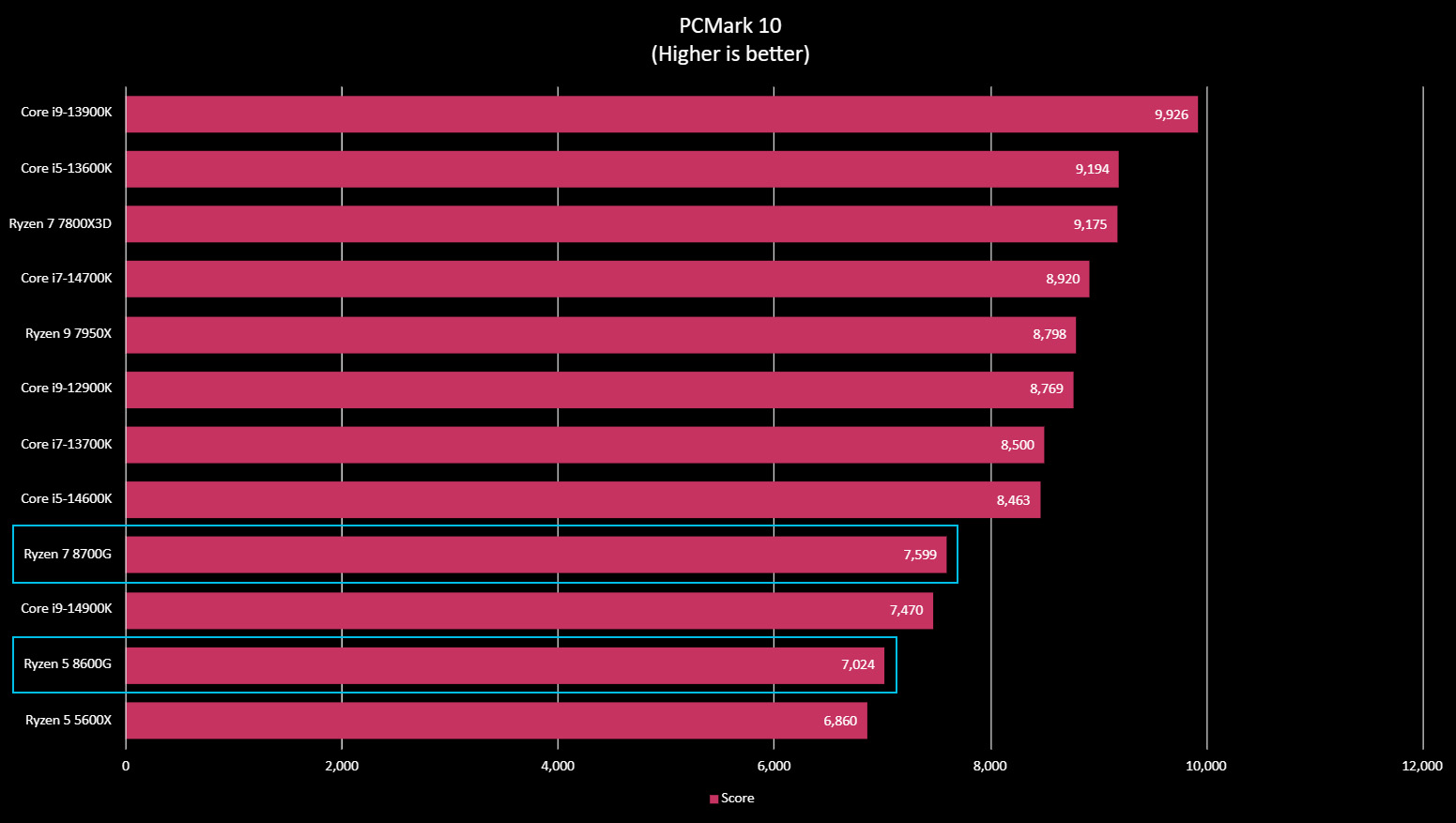
CPU-Z follows the trend, with the 8600G scoring 27% slower than the 8700G, seated between previous-generation 5000 and 7000 X-Series CPUs geared towards overclocking enthusiasts. A compression/decompression benchmark test in 7-Zip yields a score 23% below the 8700G, narrowing down the difference that $100 makes in real-world testing. PCMark 10, on the other hand, shows only a minor 7.5% drop from its more powerful counterpart in a test that emulates a range of everyday productivity apps.
From a purely productivity-focused standpoint, the Ryzen 5 8600G places above processors with matching TDP in the 5000 Series and below similar options from the 7000 Series in most tests. However, for an APU with a feature set comparable with the most powerful option in its range, the $229 MSRP attached to the 8600G could make it an absolute steal if the integrated Radeon 760M graphics match up. Since you get a CPU cooler in the box, you wouldn't have to spend much more to complete a fully functional gaming desktop.
Benchmarking the APU
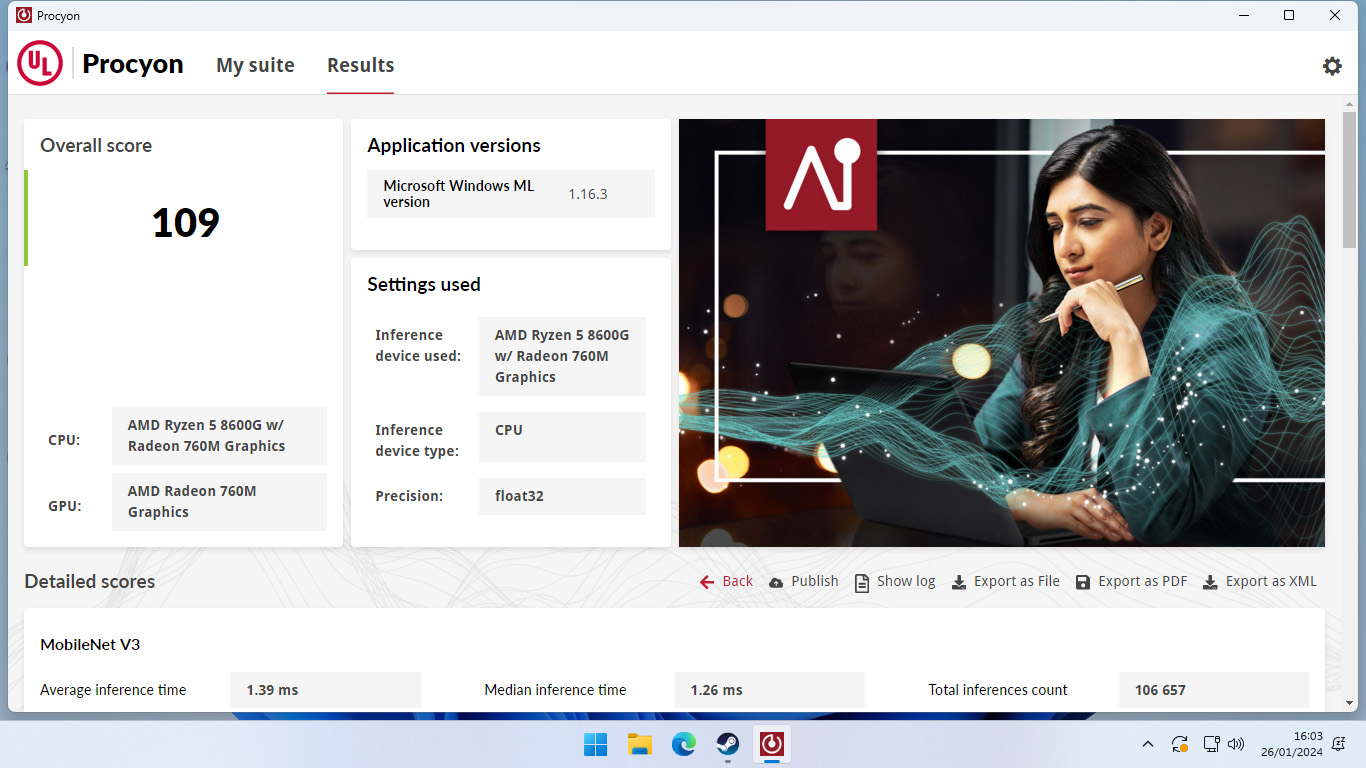
The dedicated, hardware-based AI accelerator XDNA NPU (neural processing unit) inside the Ryzen 5 8600G is a new type of technology in desktop CPUs, and there aren't many options for benchmarking their performance yet. AMD claims to be working with Microsoft to show NPU utilization graphs in the Performance tab of Windows Task Manager in future updates, but we're not there yet. However, I can access UL Procyon and an AI inference test using Microsoft's Windows ML (machine learning) API.
With only the 8700G score to compare, the 8600G came in at 109 compared to 124. Besides a 12% drop, what that means is hard to say. I can tell you that the NPUs inside each APU are not identical or aren't receiving the same configuration if they are physically the same chips. From now on, the two high-end Ryzen 8000G processors will stand as comparisons for benchmarking mobile NPUs and desktop variants from Intel when they're released.
Ryzen 5 8600G: Internal graphics
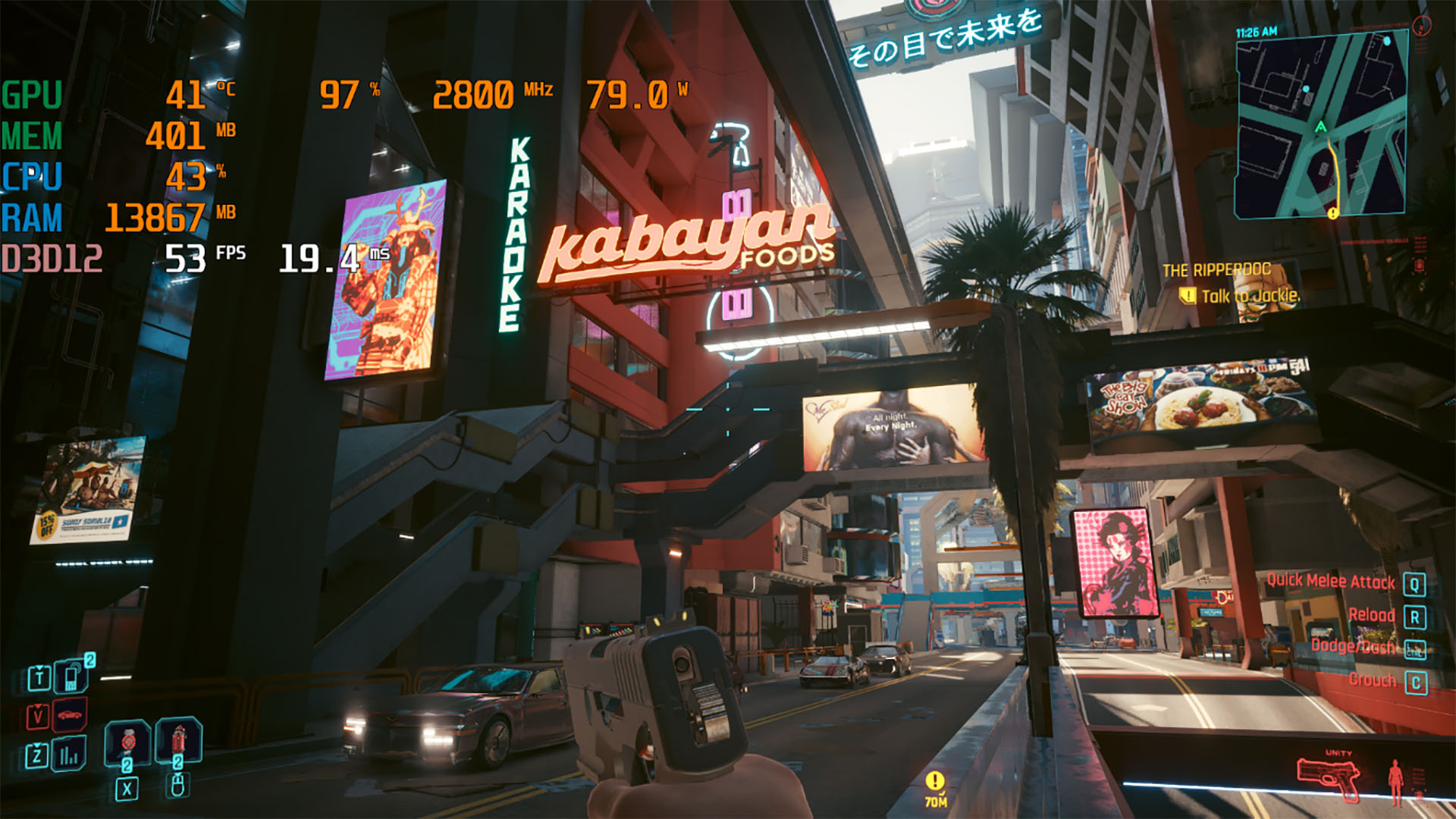
Digging into arguably the most relevant part of the whole review means comparing the 8600G's integrated Radeon 760M graphics against the 780M found in the 8700G. It's an 8-core iGPU clocked at 2.8GHz rather than a 12-core at 2.9GHz but features like potential resolution output and AV1 capability remain the same. In-game benchmark results and GPU-centric stress tests will reveal whether the core count makes more of a difference than the borderline negligible drop in clock speed.
For a $229 CPU to run any of these titles close to 60 FPS is nothing short of a revolution for integrated desktop graphics.
As with the Ryzen 7 8700G, all of AMD's claims regarding the 700M chips' capability come from testing PC games with a 1920 x 1080 resolution with a 'low' visual fidelity preset. The impact on quality differs between games, though many modern titles are optimized to an incredible degree, offering various tweaks to specific luxuries once you've found a profile that provides a stable framerate. Starting with Cyberpunk 2077, it showed a still impressive 55 FPS average, maxing out at 106 FPS in quieter scenes.
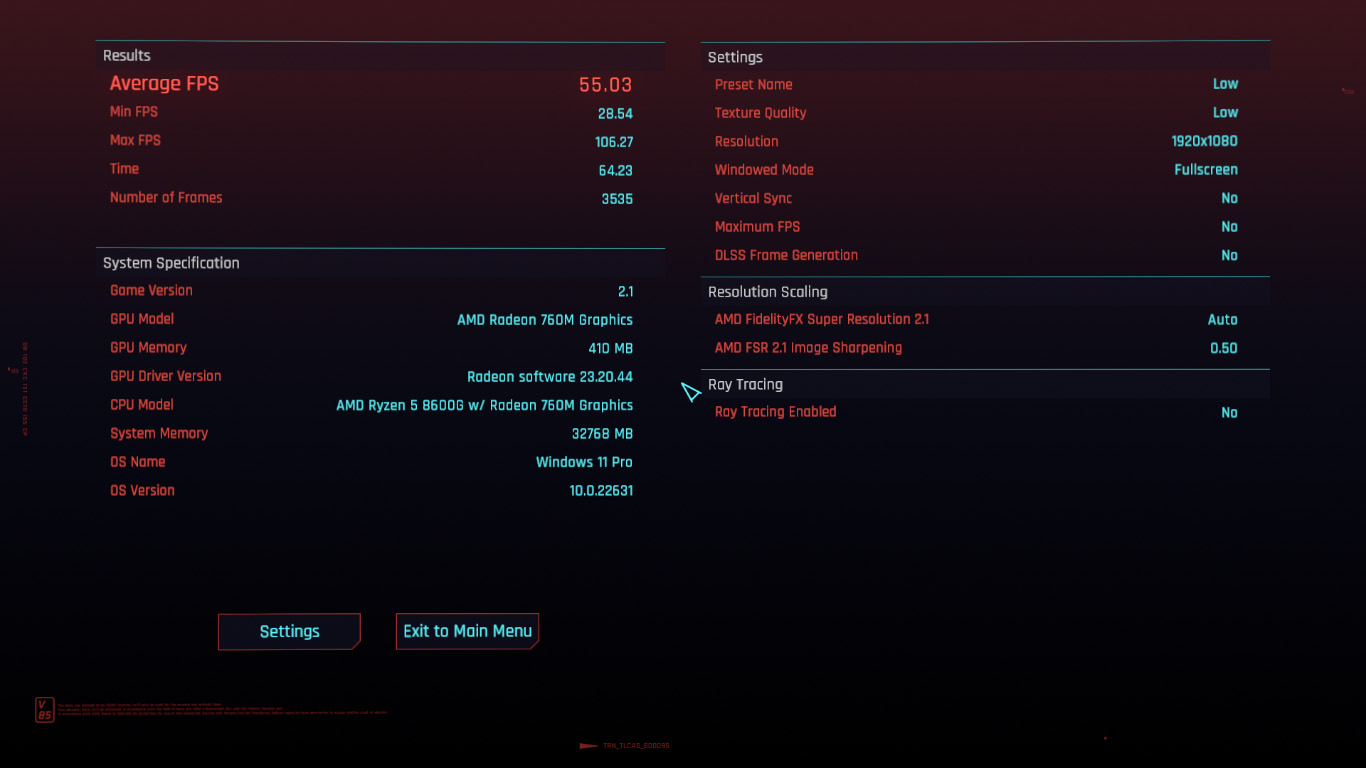


Shadow of the Tomb Raider managed a 54 FPS average, almost perfectly matching Cyberpunk 2077, while the iGPU maxed out at 82 FPS. Out of curiosity, I dropped the latter to 1280 x 720 and managed a healthy 82 FPS average for Cyberpunk 2077. However, you're entering the territory of handheld gaming consoles like the ASUS ROG Ally at this resolution. Unless AMD's Fluid Motion Frames can significantly upscale this low-res image on a desktop-sized monitor, testing at 1080p is more suitable here.
Far Cry 6 comes closest to a stable 60 FPS with a score averaging 57 FPS and a maximum of 65 FPS. All three games feature high-fidelity environments with large numbers of characters on screen, all illuminated by dynamic lighting and scenes of chaotic destruction. For a $229 CPU to run any of these titles close to 60 FPS is nothing short of a revolution for integrated desktop graphics. Still, this feels like the lowest anyone should comfortably go, and anything less would be better experienced with a budget-grade dedicated graphics card.
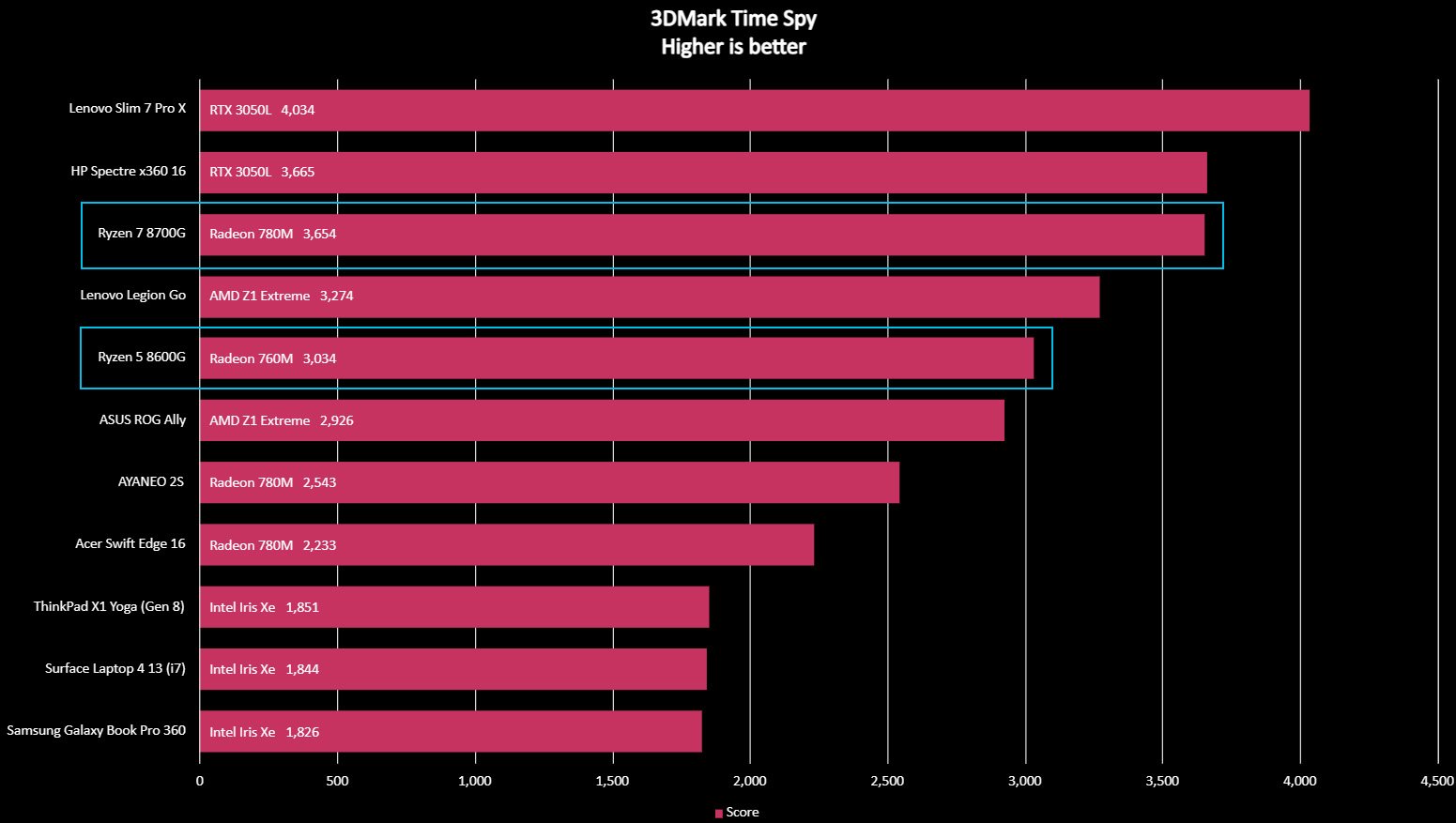
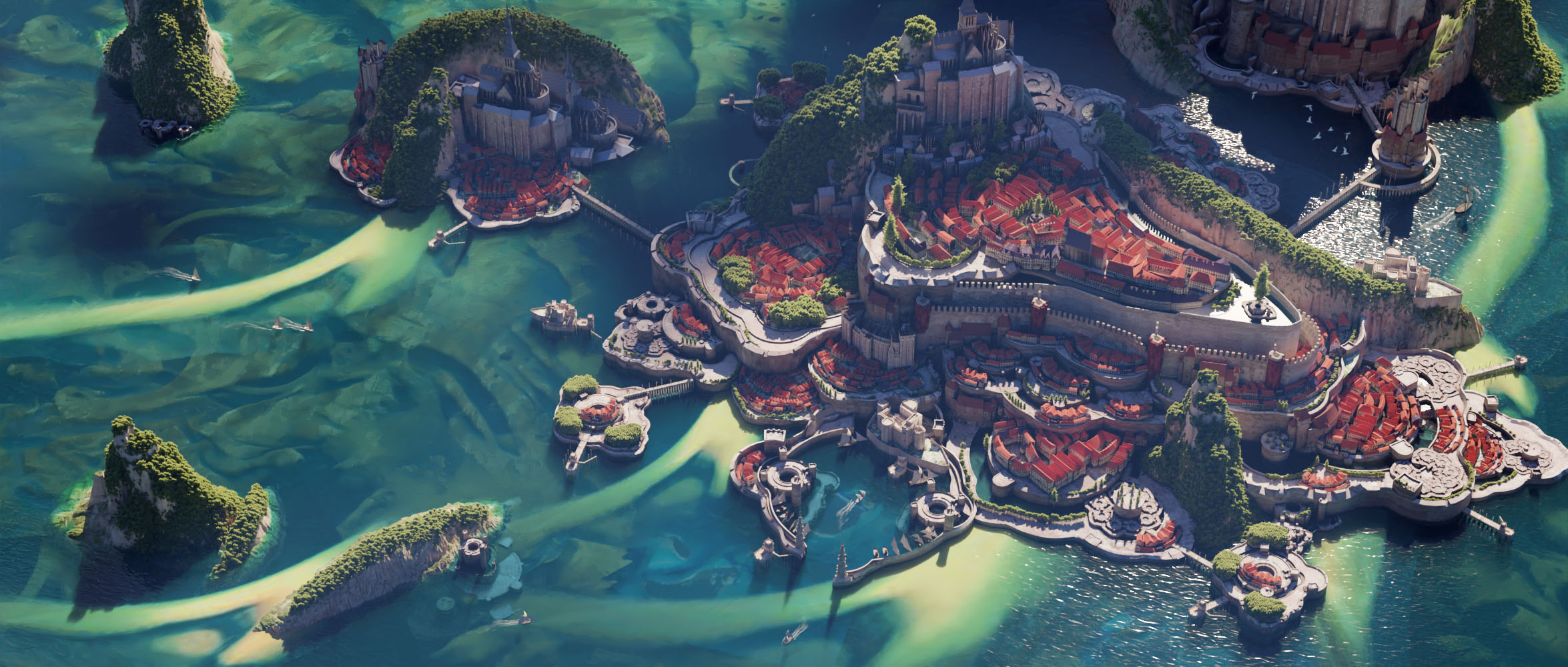
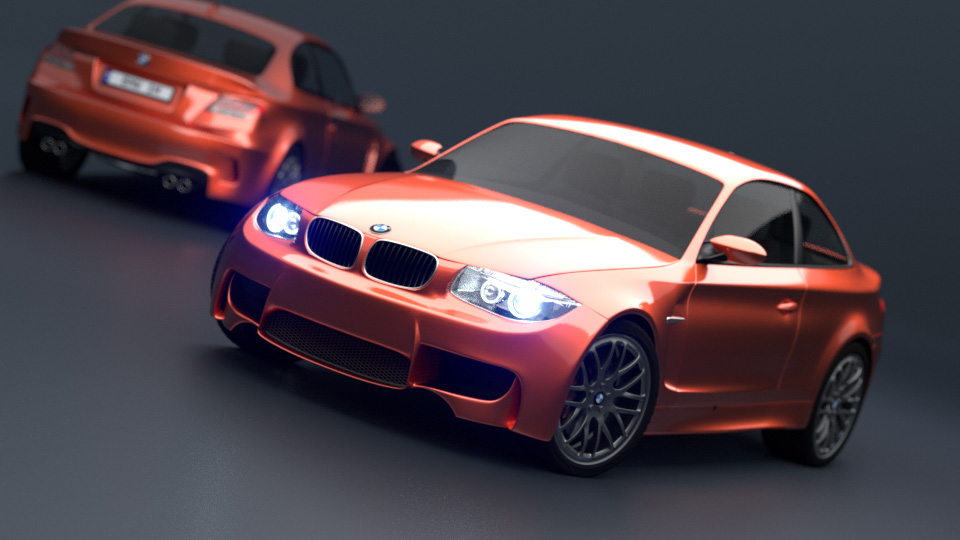

For media-centric tests, Handbrake 1.7.2 took 2,272 seconds (just under 38 minutes) to encode Tears of Steel, a 6.27GB 4K video file, with the H.265 MKV 2160p60 profile. It's an 11% increase from the Ryzen 7 8700G, which featured an upgraded Radeon 780M iGPU compared to the 760M in the 8600G. Rendering Piotr Krynski's 'Scan Island' scene from the demo files section of the official Blender website in Blender 4.0 took 18m 31s on the Cycles GPU setting, while similar tests in BMW27_GPU took 3m 14s and Classroom took 7m 7s.
3DMark's Time Spy benchmark shows the Radeon 760M still scores higher with the AMD Z1 Extreme from the ASUS ROG Ally but below the same in the Lenovo Legion Go. It's still leagues ahead of Intel's Iris Xe integrated solution for its ultrabooks and edging ahead of its technically more powerful sibling; thanks to higher potential performance allowed by desktop-grade cooling, the 8600G looks pretty slick. It all comes back to the cost argument: is a minor drop in average framerates to slightly below 60 FPS worth saving $100?
Ryzen 5 8600G: The competition

The closest competition to the Ryzen 5 8600G is, unsurprisingly, the Ryzen 7 8700G that I've been directly comparing for the entire review. On the Intel side, a 14th Gen Core i5-14600K carries a much higher $319 MSRP, which hardly changes if you only find 13th Gen equivalents at full price. To respect its purpose, it's worth pricing up a complete set of compatible parts to build a custom PC around the 8600G.
For example, an ASUS PRIME A620-PLUS Wi-Fi motherboard featuring a compatible AM5 socket is around $140, though you wouldn't need a cooler if you're happy to stick with the stock AMD Wraith option boxed with the 8600G. 16GB (2x 8GB) of Corsair Vengeance DDR5-5200 RAM sells for around $70, and a 500GB Western Digital Blue SN570 M.2-2280 would fit the PCIe 4.0 socket for $40. Picking up a Thermaltake Smart 600W for $45 and a decent case like Fractal's Design Focus G for $60 brings you to around $579 without shipping.
You still lack a Windows 11 license, keyboard, mouse, and monitor if you don't already have some to spare. Still, you're under the $700 mark that a Z1 Extreme ASUS ROG Ally would set you back, with superior performance on a fully-fledged desktop. If I were building a gaming PC for my living room with a strict budget, the Ryzen 5 8600G would be almost perfect since I wouldn't need to drop an incredible amount on a dedicated graphics card.
Still, the Ryzen 7 8700G gives you that extra punch for $100 extra and handles a 1080p resolution more comfortably than the 8600G, which is arguably better suited to 720p with the help of AMD's FSR 3 upscaling tech and HYPR-PX suite. If you're comfortable with playing at a locked 40 FPS, similar to how many choose to play on Valve's Steam Deck as a comfortable step above the 'cinematic' 30 FPS, the 8600G is for you. For 1080p at 60 FPS, go with the 8700G if you can afford it.
Ryzen 5 8600G: Should you buy?
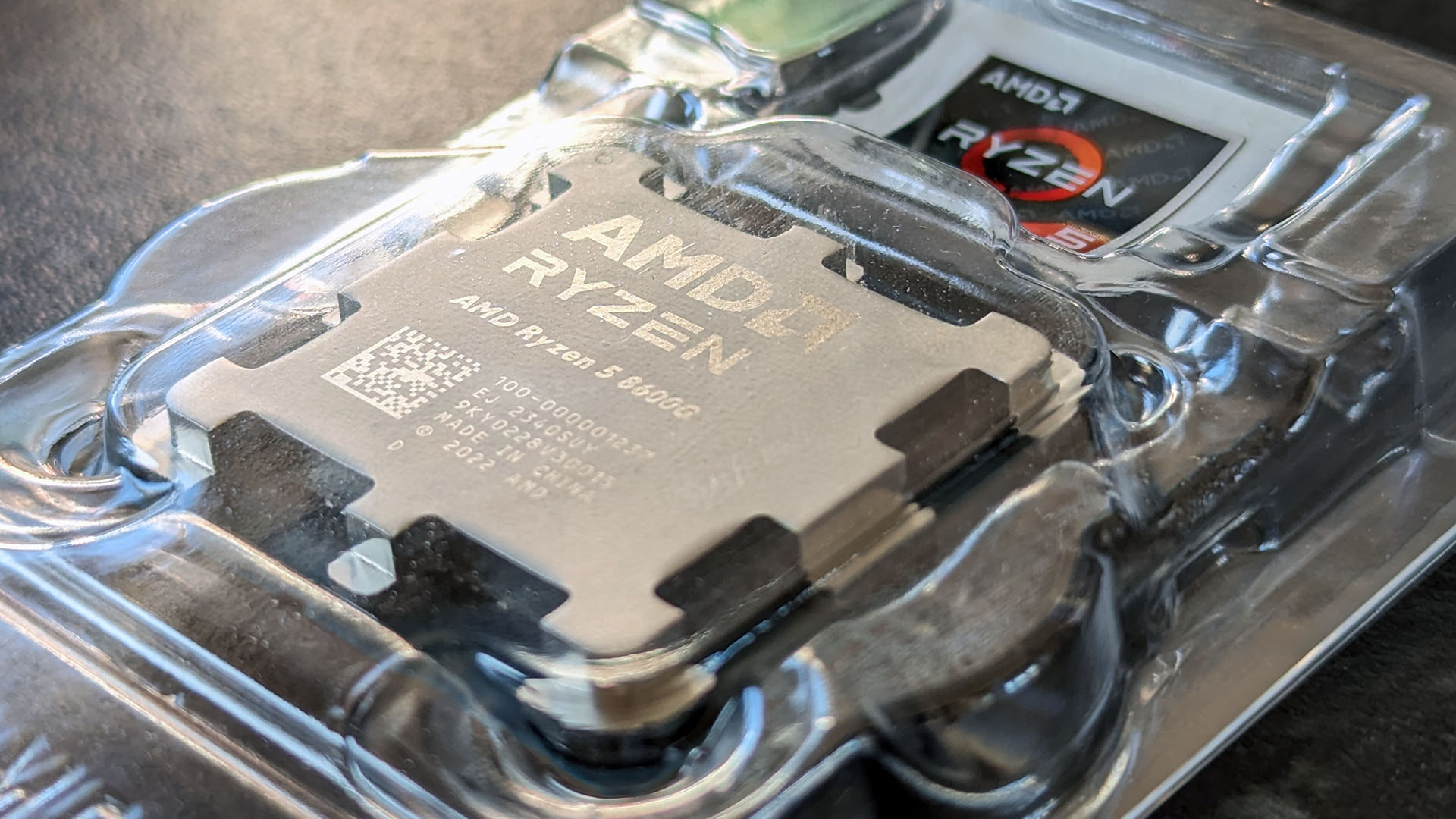
You should buy this if ...
You should avoid this if ...
AMD has delivered a powerful double punch KO to Intel regarding integrated graphics, with the Radeon 700M series giving them no option but to double down on Intel Arc iGPUs. The 8000 G-Series has two seriously tempting offerings in its Ryzen 7 8700G and the Ryzen 5 8600G, featuring an XDNA NPU for dedicated AI tasks. However, the graphical capability splits them apart. Still, if you've avoided building a custom gaming desktop PC because of the astronomical prices of graphics cards, you're in luck.
The 8600G can handle modern titles at close to 60 FPS at a 1920 x 1080 desktop resolution, but if you're willing to drop that a little further to 720p and lean on upscaling tech like FSR3 and the all-new Fluid Motion Frames to inject extra frames, it could realistically exceed that target. Otherwise, locking your framerate cap to 40 FPS could provide a more consistently smooth picture, keeping you in games with your friends until you can afford a dedicated graphics card.







